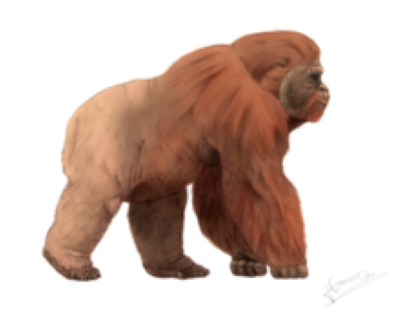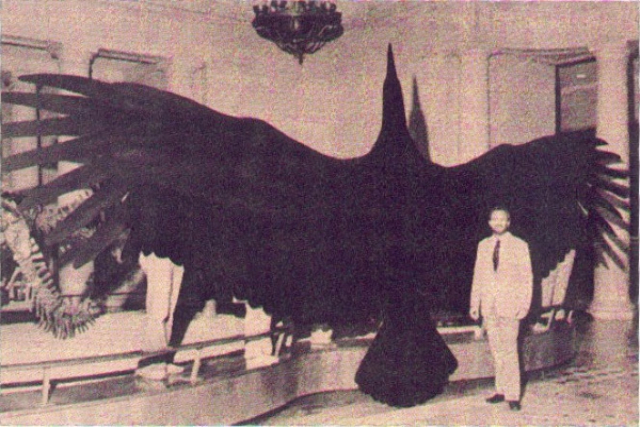
The Gigantopithecus Blacki is the largest ape to ever live. Its name literally means giant black ape.
The largest ape stood over 3m tall, weighed 539.7kg and its fearsome teeth were 2.5cm wide. But thankfully for mankind, its tastes extended no further than a juicy stick of bamboo.
There are two other apes identified as gigantopithecus, the bilaspurensis that lived earlier and the Gigantopithecus giganteus which was considerably smaller than the blacki.
The existence of the ape was unknown until 1935 when a palaeontologist named Ralph von Koenigswald found a huge molar in a Hong Kong apothecary. Later, after visiting other apothecary shops he found three more fossils that were similar in nature. Not many gigantopithecus blacki fossils were found ever since.
Based on the data available, it can be concluded that the giant apes lived in Southeast Asia. Fossils have been found in today’s China mainly and in Thailand, Vietnam, Nepal and some parts of India.
At one point the ape was thought to have been on the ancestral human line, but that has been shown to be wrong by recent studies. In fact the blacki’s closest relative is the orangutan.
Date range
A study conducted by a McMaster University professor Jack Rink concludes that the gigantopithecus blacki roamed Asia in prehistoric times alongside early man.
The four-year study found that Gigantopithecus blacki was alive between 300,000 and one million years ago. This was during the Pleistocene period, by which time early humans had already existed for about one million years.
Physical appearance:
Based on the fossils found, it is estimated that the blacki was over 3 meters (10feet) tall. Its arm span could have reached 3.6 meters (12 feet). It is believed that males were significantly larger than female blackis.
No leg bones were found yet, thus it is unsure whether the ape walked on two legs or on all four limbs, however most scientists consider that it was not a biped, just like modern gorillas.
Diet
The gigantopithecus blacki was a herbivore mainly eating bamboo sticks as well as other seeds and fruits. Their teeth had a big number of cavities, very similar to that of the giant panda.
Their canines were not sharp or pointed but had rounded ends and their inch-wide molars were flat and had heavy enamel which made it possible to grind better. There is nothing to suggest that the ape was carnivorous.
When Did the Gigantopithecus Blacki Go Extinct
It is not possible to say with certainty why the gigantopithecus went extinct. Sometimes it is easy to tie the extinction of a species with a particular event (the asteroid that created the Chicxulub crater lead to the extinction of dinosaurs or the arrival of humans lead to the extinction of the dodo bird).
But with the giganto, things are not that easy. It is most likely that a number of factors lead to its extinction. Early humans cannot be blamed solely for its disappearance because they coexisted for over 500,000 years, although competition for food with early humans could have been a factor. The loss of habitat and food coupled with the giganto’s big size and need for feeding could have been fatal for it.
Gigantopithecus Facts
Below are some quick facts about the gigantopithecus for those too lazy to read about it in narrative form:
Because of its huge size, the giganto was and still is considered by many the predecessor of the bigfoot.
All three members of the gigantopithecus species are extinct.
The gigantopithecus lived in the jungles of Southeast Asia.
Most of the fossils found were in Liucheng Cave, province of Liuzhou, China.
Its closest living relative is the orangutan.
Males were much larger than their female counterparts.
It weighed up to 540 kg (1,200 lb).
At a height of roughly 3 meters, it was the largest ape to ever live on Earth.
It was discovered very recently, in 1935.
It lived alongside early humans, the Homo erectus.
Most probably it did not roam the planet at the same time as the biggest shark of all time, the megalodon which went extinct about 1,500,000 years ago.
It was most likely not bipedal, although it is mostly depicted as that in drawings and popular culture.
As of now, more than 1,300 gigantopithecus teeth were discovered.
Humans were not in danger of being eaten by one because the gigantopithecus blacki was a herbivore.


